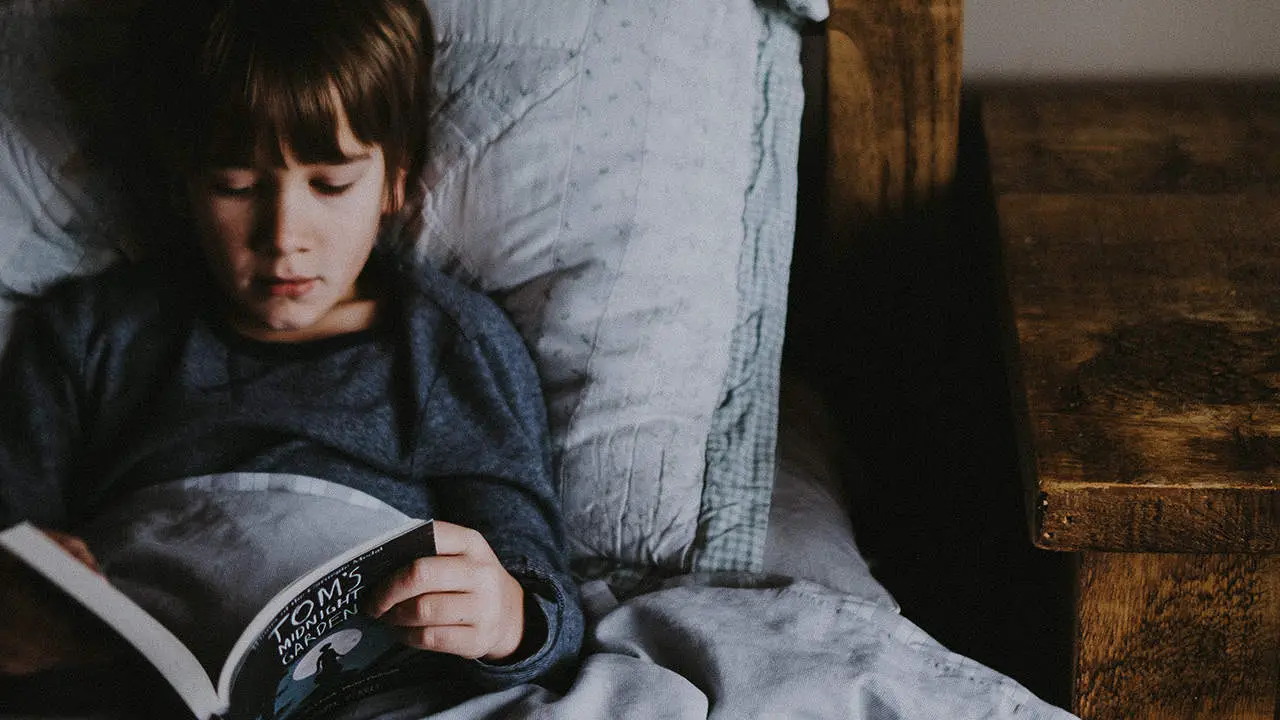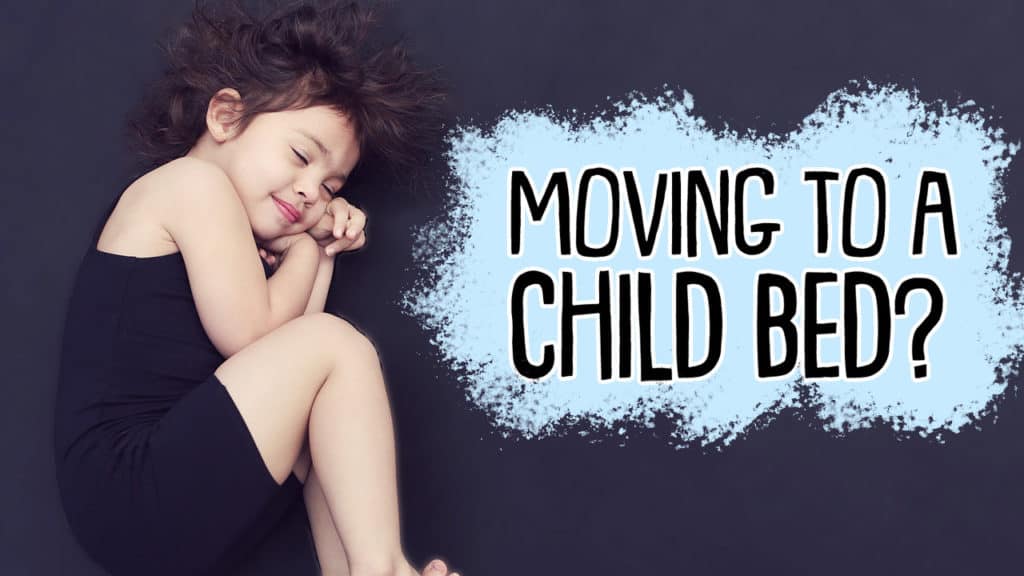It’s a scary time for parents—moving their child from the safe, protective confines of the cot and into a child bed. Not only does a cot allay safety worries, but it also helps keep your toddler stay put. Otherwise, our 18-month-olds wound up playing with their toys in the middle of the night. However, at some point, it has to happen; your little one will be ready for a bed of their own whether you are ready or not.
Why Move to a Child Bed
There is a range of reasons why it might be time to make this move.
There’s a new baby on the way.
Perhaps you need the crib for a new baby. If so, it’s a really good idea to make the transition to a big bed a few months before the baby arrives. This way, your older child will not feel like they have been pushed out of their bed for the baby and feel upset and resentful towards the baby.
They are climbing out of their cot.
Don’t rush out to get a bed at the first sign of climbing. It’s great to keep your child in their crib for as long as possible. There are a lot of great strategies to help stop them from climbing out. Try to keep them in a cot until at least they are 3 years old. By 3 years of age, most children can understand that they need to stay in bed when it’s time to sleep.
Your child is asking for a bed.
Perhaps your child is telling you directly that they are old enough, and they would like to have a big bed. This is a sign that your baby is growing up, and it’s time to go shopping.
To start toilet training.
Are you ready to start night training now and want to make it easier for your child to get out of bed to go to the bathroom? Being in a cot can make night-time toilet training more difficult for your child.
You’ve been co-sleeping, and for whatever reason, you are ready for your child to start sleeping in their own bed.

When Are Children Ready to Move
Most children are ready to move from their crib when they are around 2 1/2 to 3 years old, with the majority of 3-year-old’s having made the move. However, every child is different, and you should assess your child’s readiness individually. My boys are 2 and 10 months, and they still sleep in a crib even though they are capable of climbing out themselves. Bedtime is fine, but I still wanted the confines of the cot for their day time nap.
How to Transition to a Big Bed
So, you’ve decided that it’s time. Your child is growing in front of your eyes, and they now need a bed. But how do you make this transition easy for everyone? And how do you keep them in bed?
Talk to your child.
Let them know it’s time for a new bed. Generate excitement and anticipation with your talk about their new big bed. Let them know they are such a big girl or boy now, and they are ready to get a big bed. Make it exciting, calm any worries they might have, and get excited about shopping for the new bed and new bedding.
If you’re buying a new bed because you have a baby on the way, make sure your toddler feels really special, proud, and excited about their new bed. You don’t want them to feel pushed out. Sometimes older siblings can resort to baby-like behaviour because they don’t want to lose mom and dad’s attention. Lavish them with lots of love and attention and make this time of change special and exciting.
Read some books about the move.
Reading books about this transition helps our child with any fear, question, and anxiety they might have. It also makes the move relatable to them and allows them to understand what’s going on. Check out these seven great books below.
- A Bed of Your Own – By Mij Kelly and Mary McQuillian
- Your Own Big Bed – By Rita M. Bergstein
- Back to Bed, Ed! – By Sebastien Braun
- The Beasties – By Jenny Nimmo
- The Magic Bed – By John Burningham
- The Girl Who Got Out of Bed – By Betsy Childs and Dan Olson
- It’s Time to Sleep in Your Own Bed – By Lawrence Shapiro and Hideko Takahashi
Go shopping.
Head out or jump on the computer with your child and get shopping. There are so many wonderful different types of beds for kids—beautiful house frame shapes, cute sleigh beds, car beds, and all sorts of fun and creative ideas. You can also buy great second-hand beds on gumtree or craigslist. A little cleaning and some paint might be all you need.
What to think about:
- Convertible Cot. Did you very cleverly buy a cot which converts to a toddler bed? Bravo, very good for thinking ahead. I wish I had
- Toddler Beds. While cute and convenient, your child will grow out of them in the next few years and need a new bed again. Toddler beds are the same size as a cot, so these beds can be a good transition.
- Mattress on the floor. This is a great way to transition out of the cot, especially if you are worried about your child falling out of bed. There are some great wooden frames to house a mattress that is basically on the floor. These are really trendy at the moment, but also very convenient.
- Bunk Beds. Probably not the best idea for a first bed, especially if you are worried about your child falling out. But keep it in your back pocket, they will be ready in another year or two.
- Single Bed/King Single. Great if you are thinking about keeping the bed long term. A good quality king single could last well to your child’s teen years
Also, think about bedding for your child’s new bed.
Perhaps they would like some Spider-Man sheets, princess sheets, or those with trucks and cars. Choose a bedding theme that will make them really excited and happy about moving to a big bed.
Two great products I found were the Beddy’s Zipper Bedding and Gro to Bed. These are genius and are great ideas for a few reasons.
- They make it easy to help your toddler learn to make their own bed.
- The room stays looking neat and tidy
- The zipped sides mean the whole bed is like a sleeping bag; it is easier for your child to stay in bed.
- They are also useful to help your toddler keep their covers on at night, so they don’t get cold by kicking off the blankets.
At The Parenting Co, we also love the kid’s beddings from Crate & Barrel. The kid’s department has the cutest range of bedding and furniture.
Consider safety measures.
Now that your child will start sleeping in a big bed and not a cot, you need to make sure the room is doubly safe. No longer confined by their cot, they are free to get up and roam around at will. Hopefully, they won’t; but I’m sure at some stage they will want to test the waters and see what happens.
Make sure all furniture is bolted to the wall, especially if you have climbers. My two boys love pulling out all the toys and books off their shelves and climbing to the top. Knowing we had been blessed with two monkeys, my husband anchored the shelves to the wall. Make sure anything heavy won’t be able to fall on your child if they decide to try out their climbing skills. Make sure electricity plugs have covers, and there are no paints, crayons, and markers anywhere handy. You could have some new art on the wall.
Also make sure windows are locked, and they can’t open to climb out either. It may seem excessive, but one of my boys climbed out of his bedroom when he was supposed to be sleeping. Additionally, have a look at guard rails for the side of their bed to help stop your child from falling out.
Establish a bedtime routine.
Keep the fantastic bedroom routine that you already have. Keep everything else consistent and normal, except for their exciting new bed. If you haven’t used a consistent routine, now would be a great time to start.
Expect some issues.
Now that there is some new freedom around the bedroom expect your child to test the boundaries. You might end up with a little jack-in-the-box that keeps popping out of bed the minute you lay them down.

How to Help Your Child Stay in Bed
Talk about the new bed, their experiences and your expectations.
Talk about how when we go to bed, we go to fall asleep. We lay down, close our eyes, get comfortable, and get ready to fall asleep. It’s not playtime, nor is it exploring time. Instead, it’s time to settle down. Let them know we need to have a good night’s rest so we can be fresh and ready for all the excitement that tomorrow will bring.
Stay with your child the first few nights if they need it.
Perhaps they are feeling a little scared or anxious, and your presence will help keep them calm down and stay put. Every few nights, you can move further and further towards the door.
Move them back to bed.
The first time your child gets out of bed, tell them calmly but firmly, “It’s time for bed, honey, come on, let’s go,” or something to that effect. The second time, calmly and firmly say, “Time for bed.” After that, don’t say anything at all, just smoothly and quietly guide your child back to bed.
It’s important not to speak for a few reasons. Firstly, it helps you to keep control, stay calm, and not get angry and frustrated. When you are repeating yourself over and over again, it’s really easy to get angry and upset with your child. Then the yelling starts, and everyone is tired, grumpy, angry, and upset. Not the best environment for heading to sleep.
Secondly, by not speaking, you’re not giving your child any attention at all. This isn’t the time for play; this is the time for bed. Your child will still see you speaking firmly or negatively as getting attention. Positive or negative attention feeds their emotions. Don’t talk at all, and they won’t be getting the reaction they are looking for.
Be prepared to put them back, several even dozens of times. The first time I did this with my boys, it took 90 minutes—90 minutes of picking them up and putting them back to bed. Now they just have to see me, and they scramble back to bed. They know I won’t give in until they are in bed. It’s hard work for a few nights, and then they get the idea that you mean business. It’s hard work for a few nights, then they get the idea that you mean business.
You can see by stages how long you’ve got to go.
Stage 1. They are cautious, quiet, and checking what your reaction will be. At this stage, they are testing your boundaries
Stage 2. They start to laugh and think it is all a big joke.
Stage 3. They start to get a little frustrated that you keep putting them back to bed.
Stage 4. At this stage, they start to get quite angry that you are stopping all their fun.
Stage 5. They get really upset and cry and throw themselves down the bed.
Stage 6. Lastly, they give in and fall asleep.
If your child is still laughing and thinking it is hilarious after 40 minutes or so, you might have a good battle on your hands. Stay calm, stay quiet, stand firm, and keep putting them back to bed. You might have to physically stay in the room and keep putting them back each time they get out the first night.
Use sticker charts.
Reward your child for staying in bed all night with a sticker in the morning. When they get a sticker every day for a week, take them for a treat. Maybe they get to buy that small toy they wanted; perhaps they can have ice cream for breakfast. Ask them what they would like their reward to be. This works really well for some children, but other kids are not motivated at all by the stickers.
Remember to make the sticker chart achievable. For example, if your child is having trouble going to bed and waking up several times a night, the first goal might be to ‘follow their bedtime routine, and stay in bed until they fall asleep.’ This way, they get stickers and an achievable reward. Next move on to a reward for staying in bed all night, or staying in bed nearly all night. Start with small goals, so that they have success and get the reward for their hard work.
Introduce them to the sleep fairy.
This is one of my favourite tools; Mommy Sunniva has a great story to share about how she used the sleep fairy to help her 5-year-old daughter stay in bed all night.
Sunniva and Lily
Lily was a great sleeper until she turned 5 years old when we moved house and she started school. All the changes and disruptions threw her sleep out, and she started wanting us to stay with her every night till she went to sleep; then we’d have a visitor at 2 or 3 in the morning. I created a story of a magical sleep fairy that would come and visit her to bring her treats if she went to and stayed in bed all night. I sprinkled glitter near her pillow and left her a piece of chocolate, some stickers, or some other small thing, and sometimes even wrote little notes which worked like a charm—a few months later, and she’s still sleeping on her own, right through the night!
There is also ‘The Sleep Fairy’ book by Janie Peterson and Macy Peterson. This is a great book to read to your child to help them stay in bed all night.
Pop-Ins.
This is a great tool to help your child stay in bed, especially if they are a little fearful of being on their own. You put your child to bed and say goodnight. Then say, “I’m just going to check on Daddy, and I’ll be back in 2 minutes.” Leave the room and wait for 2 minutes before going back to check on them. Then say, “I’m going to tidy the kitchen; I’ll be back to check on you in 5 minutes.” Then leave the room and go back to check on them.
The idea is that you keep leaving the room for progressively extended periods, and they fall asleep while you are out of the room.
Install a baby gate on their door.
This is an excellent idea, especially if you are worried about your child getting up and walking around the house in the middle of the night. To keep them safe during the night, put a baby gate on their door. If you have a climber who could quickly scale the gate, you can put two gates, one on top of the other. This way, you can be sure they will be safe all night in their room.
Use a Gro-clock.
For older children, the Gro-clock is a great way to help them stay in bed, especially early in the morning hours. The Gro-clock also comes with a book to read to your child all about staying in bed. When your child goes to bed, the clock is blue and has stars around the outside. As the night progresses, the stars disappear one by one until they are all gone. When that happens, the clock turns green, and your child knows that it is time to get out of bed. These are great for early risers.
From the bassinet to the crib, to the big bed, each move marks a milestone in your child’s growth and development. Moving to a big bed is exciting for your child and worrisome for the parents. I’m sure the tips above will help you make the transition as smooth as possible.




